Flying Down to Rio

Brief Synopsis
Cast & Crew
Thornton Freeland
Dolores Del Rio
Gene Raymond
Raul Roulien
Ginger Rogers
Fred Astaire
Film Details
Technical Specs

Synopsis
Roger Bond, the playboy leader of the "Yankee Clipper Band," is fired from an engagement in a Miami hotel when he violates the hotel's policy against fraternizing with the guests by dancing with Belinha De Rezende, a beautiful Brazilian woman. Later, Roger arranges for the band to play at a friend's hotel in Rio de Janeiro, and when he discovers that Belinha also wants to go there because her father is ill, he connives to fly her in his two-seater airplane without her vigilante aunt and chaperon, Dona Elena. In spite of warnings from his best friend, Fred Ayers, the band's choreographer and accordian player, Roger fakes engine trouble and lands his airplane (which he has equipped with a piano) on a quiet, moonlit beach in Haiti. Against her better judgment, Belinha allows Roger to romance her with words and music but tells him that, as part of a family arrangement, she must marry a young Brazilian as soon as she reaches Rio. The next morning, Belinha discovers Roger's repair ruse and deserts him to join Dona Elena on the regular flight to Brazil. In Rio, Roger confesses to his friend, Julio Rubeiro, his love of Belinha, unaware that Julio is Belinha's fiancé and that the hotel's financially beleagured owner, Carlos De Rezende, is her father. At a casino gala, while the band's singer, Honey Hale, and Fred investigate their musical competition, Roger is introduced to Belinha by Julio. Although dismayed by his discovery, Roger determines to win Belinha from Julio. Honey and Fred, meanwhile, are pleasantly surprised to discover the "Carioca," a popular local dance. Soon after, a syndicate of Greek financiers and Alfredo Vianna, a local banker, conspire to take over Carlos' hotel. Confident that Carlos will be unable to obtain entertainment permits while the mayor of Rio is out of town, Alfredo arranges for the police to shut down rehearsals for the hotel's opening night show. Roger, however, outsmarts Alfredo by devising a plan whereby the show will be executed on top of a fleet of airplanes while flying over the hotel. Just before the show, Roger receives a letter of gratitude from Carlos and, moved by the old man's words, informs Julio that he is leaving immediately for Buenos Aires. After Roger and Belinha say a tearful goodbye, the show, performed by dozens of chorus girls strapped to the airplanes, proves to be a hit and guarantees Carlos' solvency. Although Honey advises Julio to elope with Belinha, Julio chooses to sacrifice his claim on Belinha and unites her with Roger on board the Buenos Aires-bound airplane. As Roger and Belinha are about to be married by the pilot, Julio jumps out of the airplane and parachutes back to Rio.

Director
Thornton Freeland
Cast

Dolores Del Rio

Gene Raymond
Raul Roulien

Ginger Rogers

Fred Astaire
Blanche Friderici

Walter Walker
Etta Moten

Roy D'arcy
Maurice Black

Armand Kaliz
Paul Porcasi
Reginald Barlow

Eric Blore
Alice Gentle
Hazel Hayes
Movita Castañeda
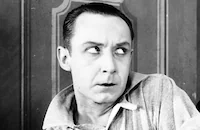
Franklin Pangborn
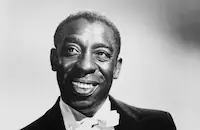
Clarence Muse
Luis Alberni
Mary Kornman
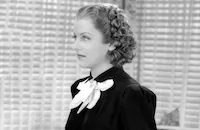
Betty Furness
Jose Moreno
Bob Cautiero
Emilio Fernandez
Alphonse De Cruz
Connie Thomas
Iris Lancaster
Jane Gumber
Ernesto Piedra
Lalo Encinas
James Natio
Richard Robles
Cruz Castro
Chita Andrews
Harriet Castelo
Joe Dominguez
John Eberts
Frank Lava
Andrew Roud
Alex Chivra
Henry De Silva
George Mendoza
Wynne Davis
Bernice Alstock
Bob Tail
Norman Bennett
Mildred Lewis
William Gavin
Nina Campana
Leo Artigo
Sam Appel
Douglas Williams
Eddie Arden
Don Marion
Wallace Macdonald
Ted Oviat
A. J. Peters
Yankee Clippers
Adrian Rosley
Chiquita
Pauline High
Ruth Riley
Paul Karlesky
Rhea De Shon
Charmayne Gaywood
Sue Romaine
Harvey Karels
Rex Moore
Juan Duval
Alma Travers
Jerry Storm
Lou Valenoi
Laura Morse
Sue Curtis
Vina Gale
Grace Davies
Doris Toddings
Mary Burman
Doreen Doyle
Ella Angelus
Margaret Harding
Mildred Lehrman
Yvonne Girrard
Maria Shelton
Marcelle Force
Celeste Edwards
Patie Ramsdell
Helen Macallister

Don Barry
Lola Durand
Armand Delmar
Mary Bracken
Rita Gordon
Carmen Bailey
Frank Malatesta
Ralph Hornbrook
Bill Fisher
Nina Martell
Victor Sabini
Jack Gargan
Harry Bowen
Barbara Sheldon
Boyd King
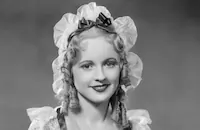
Lucille Brown
Helen Collins
Crew
Lucien Andriot
Ethel Beach
Jack Beamish
Mel Berns
Lou Brock
Lou Brock
Lou Brock
John Bushelen
Carroll Clark
Adele Comandini
Merian C. Cooper
Harry Cornbleth
Harry D'arcy
Dick Deval
Edward Eliscu
P. J. Faulkner
Joe Fields
Kent Fox
Erwin Gelsey
Bert Gilroy
Bert Gilroy
Earl Gordon
Gloria Gottshalk
Dave Gould
H. W. Hanemann
H. W. Hanemann
Bob Hess
Herb Hirst
Ben Holmes
Cyril Hume
J. Roy Hunt
Gus Kahn
Edward Killy
Jack Kitchin
Carl Lawrence
Thomas Lennon
Garland E. Lincoln
Ray Lissner
J. D. Lockhart
Art Losey
Wallace Macdonald
Fred Niblo Jr.
George Nicholls Jr.
Walter Plunkett
Van Nest Polglase
Josephine Ramos
Jack Rand
H. Reynolds
Ray Romero
Mark Sandrich
H. A. Shelton
Gilbert Souto
Gilbert Souto
Tillie Starret
Max Steiner
Charles Stiner
Harvey Thew
Ernie Thompson
Frank Tomick
Vern Walker
Homer Watson
Al Wetzel
Paul Wiser
Vincent Youmans

Photo Collections
Videos
Movie Clip



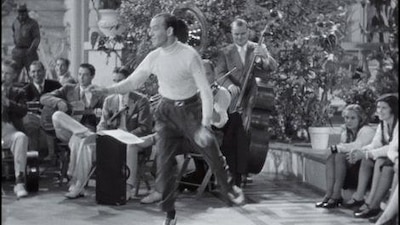
Trailer
Hosted Intro
Film Details
Technical Specs

Award Nominations
Best Song
Articles
Flying Down to Rio
In the early '30s, "All-talking! All-singing! All-dancing!" was the kind of ad that drew big crowds. Busby Berkeley at Warner Brothers led the way, into wildly improbable musical extravaganzas, and all the other studios followed. RKO, just five years old and struggling, wanted to get in on the musical action, so studio chief David O. Selznick signed Broadway musical star Fred Astaire to make his film debut in Flying Down to Rio.
Astaire and his sister and dancing partner Adele had been Broadway's top musical stars, until Adele decided to retire from the stage and marry a British nobleman in 1931. Fred was looking for new worlds to conquer, and film offered that opportunity. But by the time he arrived in Hollywood, Selznick had left RKO for MGM. He had been succeeded as RKO studio head by Merian C. Cooper, the producer of King Kong (1933), formerly a journalist, explorer, and aviator. Cooper wasn't particularly interested in musicals, but producer Lou Brock managed to convince him to go ahead with Flying Down to Rio by describing a spectacular finale involving an aerial circus.
While the film was being prepared, Selznick knew that Astaire was at loose ends for a couple of weeks, so he asked Astaire to play himself, dancing with Joan Crawford in the lavish MGM musical Dancing Lady (1933). That film became Astaire's movie debut, but Flying Down to Rio actually gave him his first role of consequence...if, indeed, the wisp of a plot can be said to have any consequence. Gene Raymond plays a bandleader and aviator who falls for Brazilian beauty Del Rio. Astaire is Raymond's sidekick and member of his band, and Rogers is the band vocalist. The band ends up in Rio de Janeiro, and Del Rio is torn between Raymond and her fiance, Roulien.
Dorothy Jordan was supposed to play the vocalist, but she decided to marry Merian Cooper and go on a honeymoon instead. Unlike Astaire, Ginger Rogers was already a movie veteran, having appeared in 19 films. Only two of them were musicals, including the film that started the whole musicals craze, 42nd Street (1933), and Gold Diggers of 1933, in which she famously sang "We're in the Money" in pig latin. Astaire and Rogers had known each other in New York, and had even dated before she went to Hollywood. They were happy to be working together, but never imagined that this would be the beginning of a great movie partnership. After all, they weren't romantically teamed in Flying Down to Rio, and they danced together only once, and briefly. Those mistakes would be more than rectified in their nine subsequent films together.
Astaire also formed another relationship on Flying Down to Rio that would become enormously important to his career. The assistant to choreographer Dave Gould was a young dancer and choreographer named Hermes Pan. He and Astaire quickly realized they had similar ideas about dance on film, and they would work on 17 films together. It was Pan who came up with the idea for Astaire and Rogers to dance with their foreheads pressed together in "The Carioca" number in Flying Down to Rio.
In spite of the fact that RKO was in financial trouble, it spared no expense on Flying Down to Rio: music by Vincent Youmans (his final score before retiring due to health problems); dozens of dancers; second-unit photography in Brazil, which provided authentic backgrounds; enormous, dazzlingly white Art Deco sets representing hotels, ballrooms and nightclubs in Miami and Rio de Janeiro; and -- as promised -- the title number, with chorus girls dancing precariously on the wings of airplanes. The number was actually a combination of wide shots done in Malibu, and process shots in a hangar, with the planes suspended by wires only a few feet off the ground.
The stunning Deco sets were possible thanks to improvements in film stock and lighting, which allowed the use of white. Cinematographers experimented with this new stock, and art directors created sparkling fantasies for them to photograph. RKO art directors Van Nest Polglase and Carroll Clark became the acknowledged masters of the style, which came to be known as "Big White Sets." Most Astaire-Rogers films contained a Big White Set -- in Flying Down to Rio, they danced on seven white pianos in the "Carioca Casino," surrounded by hordes of dancers. The only disappointment of the Astaire-Rogers Carioca is that there's not more of it. The number goes on and on, but their participation is minimal. But even in those few minutes, it was clear to audiences that the couple had an irresistible chemistry. Flying Down to Rio was a big hit, Astaire and Rogers were a bigger one, and "the Carioca" became a dance craze. RKO emerged from receivership, and became a leader in musical films in the 1930s -- mainly on the strength of the Astaire-Rogers films.
Producer: Lou Brock
Director: Thornton Freedland
Screenplay: Cyril Hume, H.W. Hanemann, Erwin Gelsey (based on a play by Anne Caldwell, from an original story by Lou Brock)
Editor: Jack Kitchin
Cinematography: J. Roy Hunt
Costume Design: Walter Plunkett
Art Direction: Van Nest Polglase, Carroll Clark
Music: Vincent Youmans, lyrics by Edward Eliscu, Gus Kahn
Principal Cast: Dolores del Rio (Belinha de Rezende), Gene Raymond (Roger Bond), Raul Roulien (Julio Rubeiro), Ginger Rogers (Honey Hale), Fred Astaire (Fred Ayres), Blanche Frederici (Dona Elena), Franklin Pangborn (Mr. Hammerstein), Eric Blore (Assistant Hotel Manager).
BW-90m. Closed captioning.
by Margarita Landazuri

Flying Down to Rio
Quotes
Wait a minute. Wait a minute. This is really good news. Rog has outdone himself.- Fred Ayres
I'll bet he's broken both legs running after two women at the same time.- Honey Hale
Nothing of the kind. He's landed us a job in Rio. Rio de Janeiro. The Hotel Atlantico. We'll be flying down any morning now.- Fred Ayres
And swimming back in the afternoon. I'm taking my water-wings.- Honey Hale
Trivia
In the original prints, the "Orchids in the Moonlight" number was color tinted.
Joel McCrea was originally slated for the role of Roger Bond.
Originally conceived of as a vehicle for RKO's Dolores Del Rio this film is most notable for its star-making pairing of Fred Astaire and Ginger Rogers. The two relative unknowns smoked up the screen in a dance number called "The Carioca" that generated such a positive response form critics and fans that they were eventually reunited in nine subsequent films.
Notes
According to a Film Daily news item, executive producer Merian C. Cooper hired writer Anne Caldwell to develop a story for a musical from an idea devised by associate producer Louis Brock. Onscreen credits indicate that Caldwell wrote a play based on Brock's screen story. The copyright record states that the film was based on a play by Caldwell and Brock, which was based on Brock's original story. No evidence that the play was ever produced theatrically has been found.
Fred Astaire and Ginger Rogers made their debut as an entertainment team in this picture. (Although Rogers had made more than twenty films prior to Flying Down to Rio, Astaire had appeared briefly in only one film, M-G-M's 1933 musical Dancing Lady.) The Variety review said of the film: "The main point of Flying Down to Rio is the screen promise of Fred Astaire. That should be about as important to Radio as the fact that this picture is not destined for big grosses, because the studio May eventually do things with this lad." Contrary to Variety's gloomy predictions about the box office, the film was a hit and helped RKO to avoid bankruptcy and receivership. A news item in Film Daily mentioned that, as a result of the success of Flying Down to Rio, the real mayor of Rio de Janeiro offered to name a city in Brazil after Brock.
Contemporary news items report the following information about the production: Prior to principal photography, cameramen J. Roy Hunt and Dick Deval spent one month in Rio de Janeiro taking footage for scenes in the film. Cyril Hume replaced Erwin Gelsey as the writer of the screen treatment after Gelsey was hospitalized for injuries suffered in an automobile accident. Gene Raymond replaced Joel McCrea in the lead; one news item claimed that the substitution was due to scheduling difficulties, while another cited Raymond's piano playing abilities as the reason. RKO withdrew William Cagney from the cast because his part was "not important enough." Writer H. W. Hanemann, who received a screen credit with Gelsey and Hume, was also assigned to "sit in" as a dialogue director on the production. Mark Sandrich, who later directed many of the Rogers-Astaire pictures, was assigned to direct a second production unit. When a third unit was added, directed by Ben Holmes, Sandrich was quoted as saying, "One more unit and Lou Brock will have it split into molecules." Composer Vincent Youmans wrote two songs for the production that were not included in the final film: "The Guest Is Always Right" and "The Streets of Rio." His song "Carioca" was nominated for an Academy Award. Other actors who were announced as cast members but did not participate in the filming include Arline Judge, Pert Kelton, Helen Broderick and Chick Chandler. Because of a "chorus girl" shortage in Hollywood, producer Brock and a cameraman went to Texas to scout for possible casting additions. Out of 1,500 women who applied, 100 were tested. According to a Film Daily news item, Dorothy Trail was cast in the film after her father, responding to a radio broadcast in which Brock announced that RKO was searching for "brunettes," sent her to Hollywood from Arkansas. Her participation in the final film has not been confirmed. Singer and dancer Mowita Castenada was "discovered" by RKO producer Pandro S. Berman while attending a RKO sales meeting in San Francisco. Alice Gentle and Hazel Hayes were well-known opera singers. Contemporary news items add Margaret Mearing and Enrico Caruso, Jr. to the cast, but their participation in the final film has not been confirmed. According to studio production files, scenes were shot at Malibu Beach and Mountains, Cabrillo near San Diego, the Ambassador Auditorium in Los Angeles and in Miami, FL. Aircraft used in the film included Waco Sport, Fairchild 71, Buhl Pup and Stinson Detroiter, according to production files. Although not seen in the viewed print, color tinting was added to the film for the "Orchids in the Moonlight" sequence, according to Variety.
Modern sources add the following information about the production: Brock convinced Merian Cooper, a member of the board of directors of Pan American Airways and a lover of adventure stories, to undertake the musical by emphasizing its aviation elements and setting it in an exotic location. (Pan American had begun service from Miami to the South American coast in 1932, and its "clipper" aircraft were used in the film.) Financial troubles at RKO ruled out Brock's plan to shoot the musical in three-color Technicolor. Because Dorothy Jordan had understudied Fred Astaire's sister Adele in the stage play Funny Face, she was considered for the role of "Honey." Her marriage to Cooper prior to production curtailed her participation in the film, however. Astaire had met Rogers in 1930 while restaging one of her numbers from the 1930 Gershwin Broadway musical Girl Crazy. (Another source states that the duo met while performing in the 1931 Broadway show Top Speed.) In his autobiography, Astaire claims that the studio cast Rogers, who had just signed a seven-year contract with RKO, only days before rehearsals were scheduled to begin. Rogers, who was trying to start a career in dramatic film acting, was less than thrilled about performing in a musical but told Astaire she thought the project might be fun. Astaire began his long-term collaboration with Hermes Pan on this production. Astaire says in his autobiography: "Dave Gould was assigned as dance director but I did most of my work with his assistant, Hermes Pan." Because Rogers was working on other films while Flying Down to Rio was in pre-production, Pan had to rehearse her dance steps with Astaire and then teach her the routines just before shooting. Pan reportedly came up with the idea for the part of the "Carioco" number in which Astaire and Rogers touch heads and make turns without losing contact. In addition to Pan, Astaire also met and worked with pianist and musical arranger Hal Borne for the first time on this film. Borne appears briefly in the film playing the piano. As part of his role in the 1931 musical The Band Wagon, Astaire learned how to play the accordian and played it during his scenes in Flying Down to Rio.
Dissatisfied with his performance in the film, as well as his screen persona, Astaire left for London immediately after shooting ended and revived his starring role in the stage musical The Gay Divorce. To his surprise, the film's previews were well received, and Pandro S. Berman sent a wire to London assuring the dancer of his success. Astaire and Rogers' dance duet in the film, "The Carioca," dazzled audiences and created a "Carioca" dance craze around the country. To capitalize on the dance craze and Rogers and Astaire's sudden popularity, studio publicists billed the burgeoning team as "The King and Queen of 'The Carioca.'" In addition, Berman went immediately to see Astaire in The Gay Divorce, while RKO signed him to a contract. The film's most notable line, which is spoken by one of Belinha's friends in the Miami hotel, "What have these South Americans got below the equator that we haven't?" was disapproved of by both censors and reviewers. The film's final "aviation" sequence was shot in an airplane hangar and used suspended airplanes and wind machines. Back-projection and process shots were also used in the sequence.
Modern sources add the following actors to the cast list: Ray Cooke (Banjo player), Gino Corrado (Messenger), Harry Semels (Sign poster), Jack Rice (Musician), Martha La Venture (Dancer), Sidney Bracey (Rodriquez, chauffeur), Manuel Paris (Man at Aviators' Club), The Brazilian Turunas (Band), and Howard Wilson, Francisco Moran, Carol Tevis, Eddie Tamblyn, Alice Ardell, Rafael Alvir, Eddie Boland, Julian Rivero and Pedro Regas. Modern source crew credits include Mus rec Murray Spivack, Miniatures Don Jahraus, Researcher Elizabeth McGaffey, Make-up Mel Berns, Still photog John Miehle. According to Variety, RKO withdrew Flying Down to Rio from theatrical circulation in 1980 because of perceived overexposure. For more information on the Astaire-Rogers teaming at RKO, see listing below for Top Hat.
















